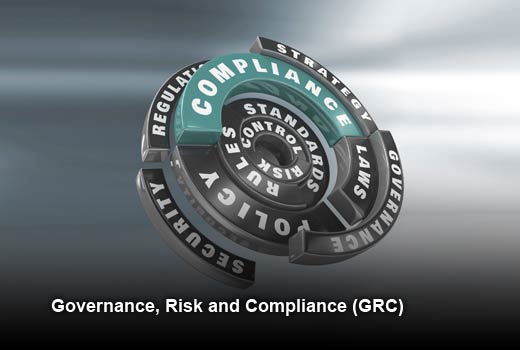It’s a common complaint across the enterprise: IT is too slow moving and far too restrictive to give corporate stakeholders, such as lines of business (LOBs), CMOs and employees, the tools they need to succeed in their jobs. However, the digital transformation that we are seeing many industries undergo is making this notion a little more complex. Easily accessible applications, lack of bring-your-own-device (BYOD) policies and free cloud services are giving employees the option to go around their IT departments and utilize alternative services. Thus, enterprises are essentially creating “shadow IT” organizations, in which their employees sidestep IT and create a digital transformation in and of themselves.
And this might sound like a great solution – employees are happy with their environments while their IT departments are none the wiser. However, creating a shadow IT organization is not without its flaws, especially when IT departments don’t have complete visibility of their employees’ systems. If they don’t have full visibility, their companies are much more vulnerable to cybersecurity attacks, service outages and other risks that may threaten mission-critical applications.
In order to best mitigate these risks, IT departments need better insight into their users’ traffic behavior so they can identify the cause of any threats. Furthermore, it’s possible for IT to reverse these trends entirely and make CIOs and IT teams the go-to partners for what was previously considered shadow IT. To do this, however, they must first demonstrate the necessary agility and high quality of complex service assurance that users are looking for with the following six strategies, identified by Michael Segal, director of enterprise solutions, NETSCOUT.
6 Strategies for Overcoming Shadow IT
Click through for six ways IT departments can demonstrate the necessary agility and quality users are looking for and overcome the inherent risks of shadow IT, as identified by Michael Segal, director of enterprise solutions, NETSCOUT.
Current IT Infrastructure
Research and understand your current IT infrastructure.
Before embarking on any significant digital transformation effort, it makes good sense to take stock of where you are starting. What does your current environment look like? How is your company’s IT infrastructure utilized by existing applications? In what ways can you use this information to plan for necessary infrastructure upgrades based on the corporate needs? By gaining insight into the infrastructure utilization, IT will be able to ensure enough resources are allocated not only for existing services but also to accommodate future corporate needs, such as rolling out new services and increasing the number of users. You can also use this information to plan for necessary infrastructure upgrades.
Innovation and Testing
Once you have a comprehensive view of your environment, model innovations quickly and then focus on perfecting them.
It is essential that any technologies sweeping enterprise environments are tested, tested and then tested again. This allows for a steady stream of feedback and an endless overview of how the technology is performing. Moreover, a constant review process with new technologies means that new applications are deployed in real time in their production environments. This combination of the entire infrastructure and the applications it supports, including network, servers, service enablers and databases, constitutes a service that is consumed by user communities and needs to be continuously monitored. This means that the root cause of service degradations can be quickly identified so that organizations’ DevOps teams can provide application developers with necessary feedback to fix any software bugs affecting application performance.
Business Assurance Strategy
Develop a business assurance strategy to empower your team to deliver what your users require.
Business assurance is the process of guaranteeing the quality and performance of service delivery, mitigating corporate risk and optimizing operational efficiencies; it is essential for a company’s overall success in our increasingly connected world. Enterprise IT departments need end-to-end visibility across physical, virtual and hybrid environments, thereby guaranteeing that IT functions are ensured. Through a holistic view of their systems, IT can also use a business assurance solution to address any challenges that arise through their companies’ digital journeys, effectively allowing them to mitigate and manage any threats and service performance issues that arise. The pervasive monitoring associated with this strategy also allows IT to better meet risk and compliance obligations for all IT operations by effectively identifying service anomalies and their respective business risks and by helping to find the root cause of these anomalies.
Technology Foundation
Incorporate pillars of innovation and their respective foundational technologies into your environment based on the business models, applications and services required to succeed.
As companies introduce new services, the ability to scale rapidly, collect data from new users and process that data into information is paramount. Pillars of innovation, such as cloud, Big Data analytics, IoT, social, unified communications and mobile, and their respective foundation technologies require continuous monitoring of an entire service infrastructure end-to-end and superior scalability to gather, organize and analyze large volumes of smart data in real time. The foundation of your technology should be able to not only support the monitoring of the current IT infrastructure on- and off-premise, but should also be able to support any future growth.
Governance, Risk and Compliance (GRC)
Incorporate shadow IT programs into your GRC strategy.
IT organizations should strive to govern all shadow IT programs as part of their GRC strategy. Even in cases of LOBs, CMOs or chief digital officers (CDOs) initiating a discussion of a cloud service with a provider, the IT organization must be able to monitor these services to both ensure service performance and mitigate risks. IT should also participate in the negotiation with the external providers to ensure that the offered services comply with the necessary regulatory requirements as well as help leverage the corporate economies of scale in order to negotiate the best rates for the corporation and avoid waste created by purchase of duplicate services.
BYOD Strategy
Put a BYOD policy into place as part of the GRC strategy.
BYOD policies should be authored and governed by IT. With the millennial generation quickly invading the corporate workforce, benefits such as increased productivity and job satisfaction outweigh the drawbacks such as support costs and privacy concerns. Furthermore, not having a BYOD policy does not mean that personal devices are not used on corporate networks. In fact, without a clear policy that is governed and enforced by IT, the risks associated with unauthorized communications with third parties can lead to reduced corporate cyber resilience and all of the associated threats. Incorporating BYOD policies into your GRC strategy can help manage shadow IT programs, ensuring they are added to an official IT service catalogue. CIOs can then regain control of shadow IT and become internal service providers.









